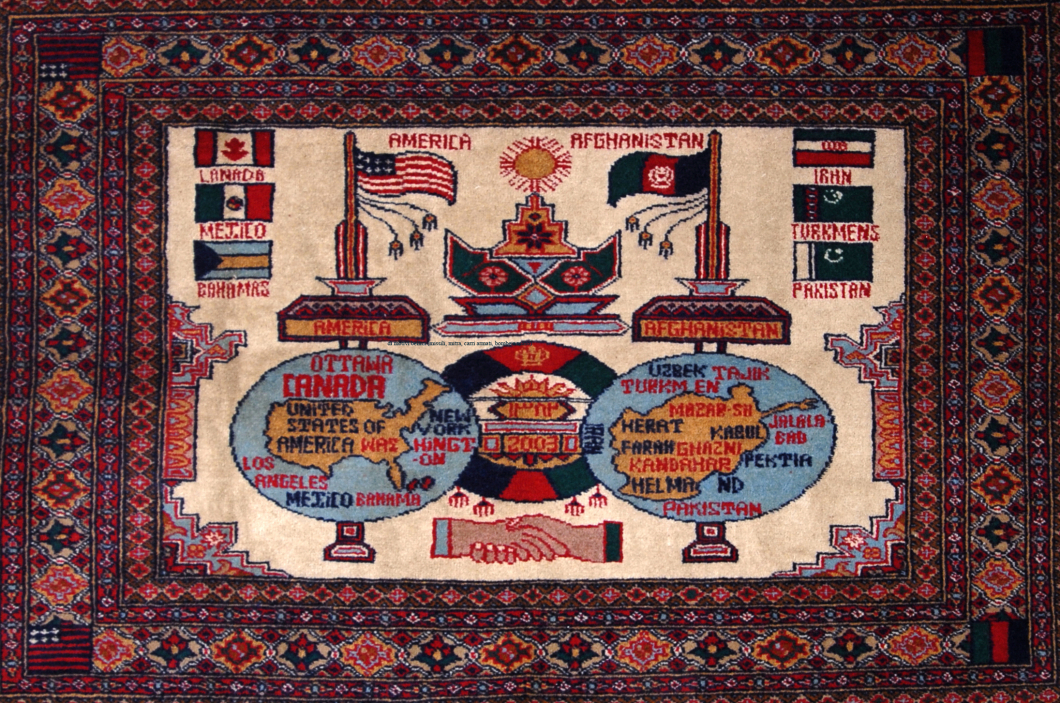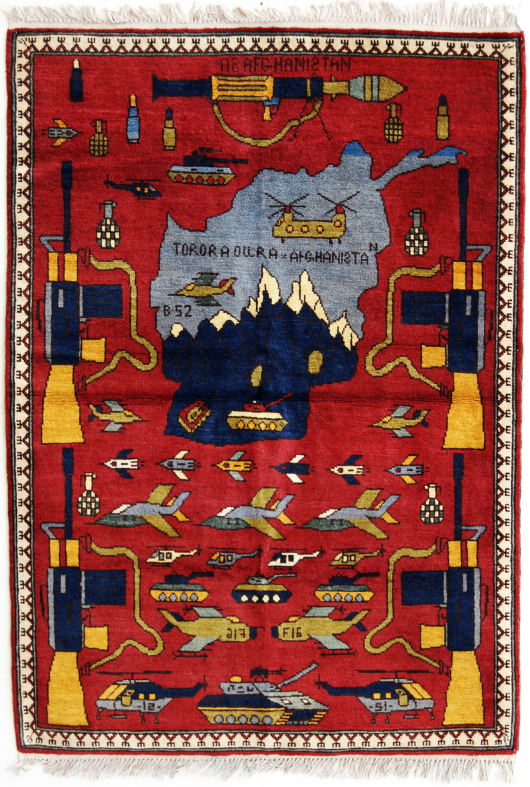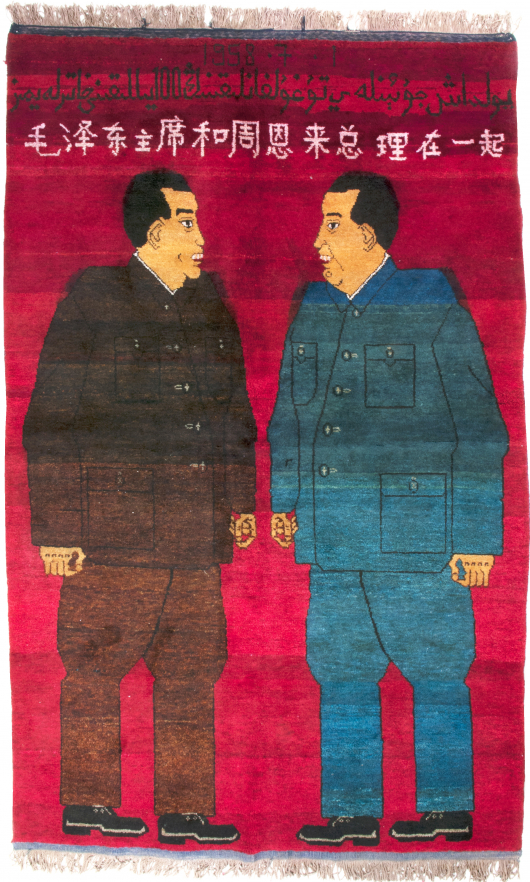07/05/2022 | Maria Adelaide Marchesoni
Sergio Poggianella's war rugs
A collection of figurative tapestries telling the story of Afghanistan on show in the offices of the accounting firm BBS-Lombard in Milan
Studio BBS-Lombard, operating in strategic and fiscal consulting for arts and cultural organizations, has reopened its spaces to the public after the pandemic with the exhibition "Borders and Conflicts Visions of Power in Oriental Figured Carpet" (through May 27), dedicated to a rather unique collection of art artifacts, the collection of Oriental figured carpets and tapestries by Sergio Poggianella, an anthropologist from Rovereto, Italy, and an expert in shamanic and textile art.
The collection was born in the 2000s when Poggianella, at the time a gallery owner and an expert on Futurist art (he is credited with the first and only catalog raisonné of Balla's work), met a shamanic art historian in Budapest and accompanied him to Siberia, to the meeting of the ISARS "International Society for Academic Research on Shamanism," which he joined a while later, focusing his research and studies on shamanic art.
Back in Italy, his interest in ethnic and primitive popular art grew until he was suggested to organize an exhibition on Central Asian felts. In preparation for this exhibition, Poggianella organized a series of trips to Pakistan, Central Asia, Kyrgyzstan, and Kazakhstan, during which he began collecting rugs and felts, which he displayed in his gallery.



The exhibition at the BBS-Lombard spaces documents versions of the so-called Afghan war rug and is divided into four sections. The first is Maps, artifacts that will not be unfamiliar to contemporary art enthusiasts. In fact, these are the rugs that inspired Alighiero Boetti in the 1970s during his travels to Kabul to create his "Maps" for which he used the same craftsmen from the area. Among these artifacts is also a tapestry with a style that can be traced back to Boetti's, which depicts a map of the world and features on the edge the verses of the Persian poet Shiraz's poem on the equality of peoples, the same poem that is found at the entrance to the New York headquarters of the United Nations.
The war carpets, loom-based representations of historical events, created since the 1980s following the invasion by the Soviet Union, come next. In these carpets abstract motifs from the Eastern textile tradition are combined with images of weapons. These carpets, which were considered less important in the country were used by merchants to wrap more valuable rugs and tools, have instead enjoyed great attention in the West, where their artistic value has been appreciated.
Indeed, similar carpets were displayed in 2001 in the famous "Ornament and Abstraction" exhibition at the Fondation Beyeler.


Another War Rug in the show is the Landscape Rug, among which we find one of the oldest examples in the collection, a rug from Khotan, the state on the Silk Road, depicting the advent of the modernist revolution in the 1920s and depicting trains at speed, steamships, and aircraft. This carpet is related to another artifact in the exhibition and part of the fourth and final variant of carpets, those of the portraits of people in power, a portrait of the modernist advocate of Afghanistan, the Amanullah Kahn, king of Afghanistan in the 1920s who removed the veil and created industries before the wave of Taliban return.

The carpets in Poggianella's collection, which are genuine works of art in terms of aesthetic, ethical and social value, are examples of the ability of Eastern craftsmen to narrate history through everyday objects, unlike the Western artistic tradition, in which the historical narrative takes place on canvas. "Created in a context of war, these carpets can show the way to a culture of peace," believes Sergio Poggianella, "a theme that is as timely as ever at the time of the war between Russia and Ukraine."


